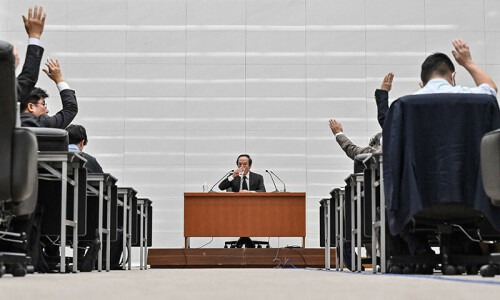TOKYO: The Bank of Japan (BOJ) made a historic move away from its concentration on reflating growth with decades of huge monetary stimulus on Tuesday, ending eight years of negative interest rates and other remains of its unconventional policy.
Although it was Japan’s first interest rate increase in 17 years, economists note that the action essentially leaves rates unchanged as the central bank is forced to take a cautious approach to additional increases in borrowing costs due to a fragile economic recovery.
With this change, Japan becomes the final central bank to remove negative interest rates, bringing an end to a period in which governments attempted to boost economy via unconventional monetary policies and cheap money on a global scale.
“Like other central banks, we went back to a regular monetary policy targeting short-term interest rates,” BOJ Governor Kazuo Ueda stated following the decision at a press conference.
Ueda stated, “If trend inflation heightens a bit more, that may lead to an increase in short-term rates,” but she did not specify when or at what rate additional rate hikes would likely occur.
In a widely expected decision, the BOJ ditched a policy put in place since 2016 by former Governor Haruhiko Kuroda that applied a 0.1 per cent charge on some excess reserves financial institutions parked with the central bank.
The BOJ set the overnight call rate as its new policy rate and decided to guide it in a range of 0-0.1pc partly by paying 0.1pc interest to deposits at the central bank.








